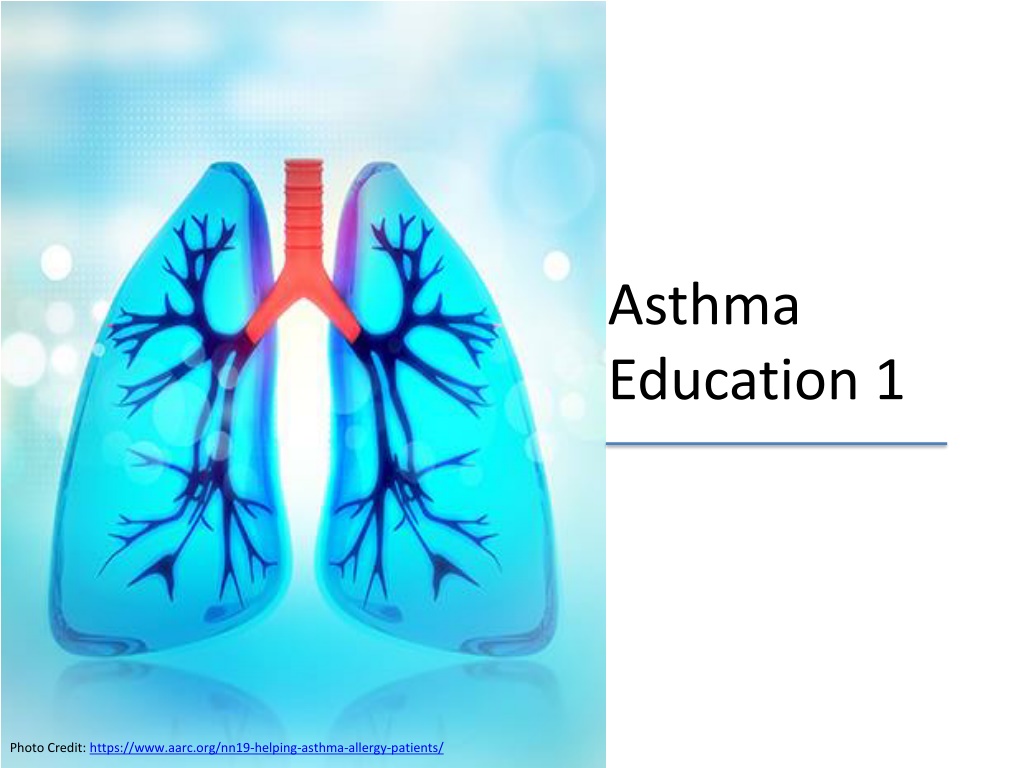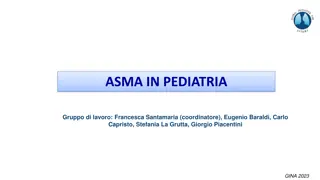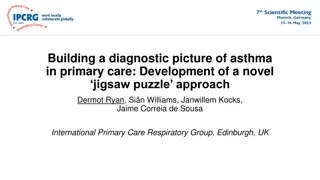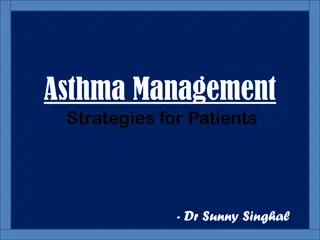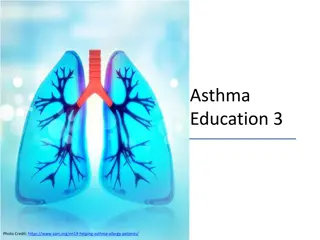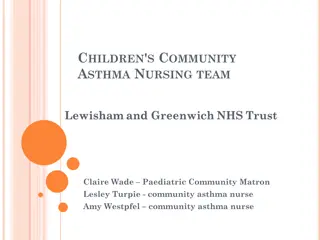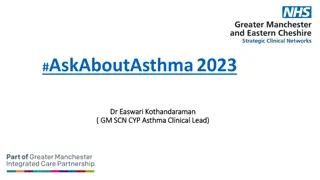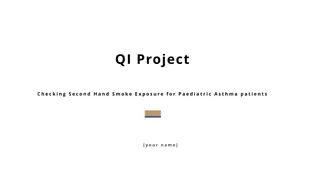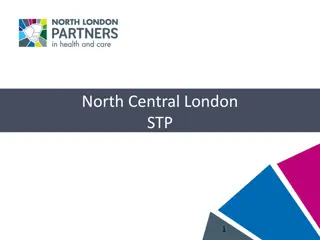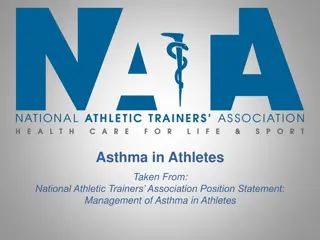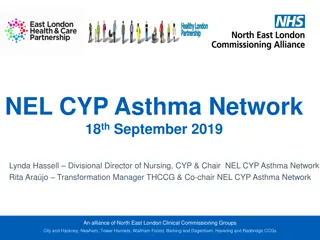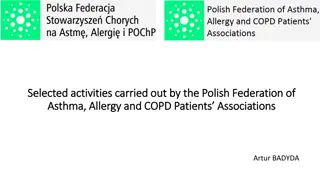Understanding Asthma: Symptoms, Causes, and Management
Asthma is a lung disease characterized by inflammation and bronchoconstriction, leading to symptoms like wheezing, coughing, shortness of breath, and chest tightness. It is not contagious and can develop at any age, with early signs like eczema potentially leading to asthma later. Recognizing symptoms and understanding the inflammatory processes are crucial in managing asthma effectively.
Download Presentation

Please find below an Image/Link to download the presentation.
The content on the website is provided AS IS for your information and personal use only. It may not be sold, licensed, or shared on other websites without obtaining consent from the author. Download presentation by click this link. If you encounter any issues during the download, it is possible that the publisher has removed the file from their server.
E N D
Presentation Transcript
Asthma Education 1 Photo Credit: https://www.aarc.org/nn19-helping-asthma-allergy-patients/
Module 1 Questions 1. Which of these is a symptom of asthma? a) Coughing, even when you're not sick b) Shortness of breath c) Getting tired quickly d) All of the above 2. True/False: You can catch asthma from someone else who has it. a) True b) False 3. Which of these is a SIGN of asthma? a) Wheezing b) Being hungry c) Feeling grouchy d) A rash
Introduction What is Asthma? Asthma is a disease of the lungs and is caused by inflammation in the airways. Asthma can start at any age. Some people may have it when they are very young, and some people develop asthma when they are adults. If someone develops asthma at a very young age their symptoms might go away as they get older and their lungs get larger. However, these symptoms might come back again later in their life. Although asthma is caused by the immune system, it is not a contagious illness; in other words, you cannot get asthma from someone else who has it.
Asthma and Inflammation Asthma is an inflammatory disorder caused by the immune system. What is inflammation? Inflammation is swelling in the lining of the lungs. What is bronchoconstriction? Asthma is also caused by bronchoconstriction, which means the tightening of the smooth muscles around the airways. This causes the airways to become even tighter, and for breathing to become much harder. Photo Credit: https://www.cfspharmacy.pharmacy/blog/post/oral-ketotifen-some-novel-uses When someone has asthma the lining of their lungs will produce excess mucus, this also makes the airways narrower.
Symptoms of Asthma Asthma has many signs and symptoms: Wheezing Coughing (even when you are not sick) Chest tightness Shortness of breath Getting tired quickly Retraction (sinking of the areas in the neck and between the ribs when someone is trying to inhale) Symptoms can vary from person to person. You may have one or multiple of these symptoms. Even if you are only showing one symptom, it should still be taken seriously. Remember, some people may only have cough as a symptom. There are people with asthma who may never wheeze.
Atopic March Eczema at a young age can in some cases be the earliest sign of the atopic march, which is the progression from eczema to the later development of food allergy, hay fever, and asthma. If you have a history of eczema, food allergies or hay fever you are at an increased risk to develop asthma.
Atopic March Graph This is a representation of how prevalent each of these atopic diseases are as a person gets older.
Module 1 Questions (re-visited) 1.Which of these is a SIGN of asthma? a) A rash b) Being hungry c) Wheezing d) Feeling grouchy 2. Which of these is a symptom of asthma? a) Getting tired quickly b) Coughing, even when you're not sick c) All the answers d) Shortness of breath 3. True/False: You can catch asthma from someone else who has it. a) True b) False
